
Agostino Carracci was an Italian painter, printmaker, tapestry designer, and art teacher. He was, together with his brother, Annibale Carracci, and cousin, Ludovico Carracci, one of the founders of the Accademia degli Incamminati in Bologna. Intended to devise alternatives to the Mannerist style favored in the preceding decades, this teaching academy helped propel painters of the School of Bologna to prominence.

Sisto Badalocchio Rosa was an Italian painter and engraver of the Bolognese School.

Annibale Carracci was an Italian painter and instructor, active in Bologna and later in Rome. Along with his brother and cousin, Annibale was one of the progenitors, if not founders of a leading strand of the Baroque style, borrowing from styles from both north and south of their native city, and aspiring for a return to classical monumentality, but adding a more vital dynamism. Painters working under Annibale at the gallery of the Palazzo Farnese would be highly influential in Roman painting for decades.
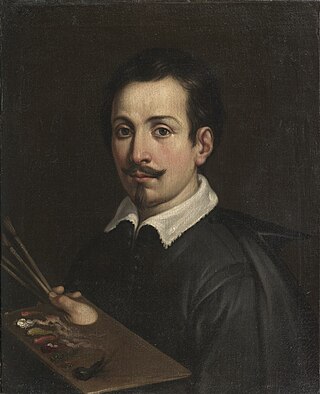
Guido Reni was an Italian painter of the Baroque period, although his works showed a classical manner, similar to Simon Vouet, Nicolas Poussin, and Philippe de Champaigne. He painted primarily religious works, but also mythological and allegorical subjects. Active in Rome, Naples, and his native Bologna, he became the dominant figure in the Bolognese School that emerged under the influence of the Carracci.
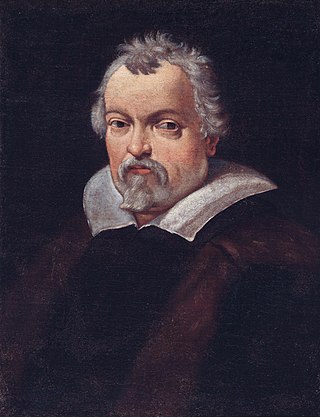
LudovicoCarracci was an Italian, early-Baroque painter, etcher, and printmaker born in Bologna. His works are characterized by a strong mood invoked by broad gestures and flickering light that create spiritual emotion and are credited with reinvigorating Italian art, especially fresco art, which was subsumed with formalistic Mannerism. He died in Bologna in 1619.
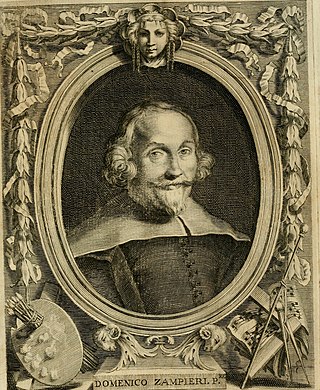
Domenico Zampieri, known by the diminutive Domenichino after his shortness, was an Italian Baroque painter of the Bolognese School of painters.
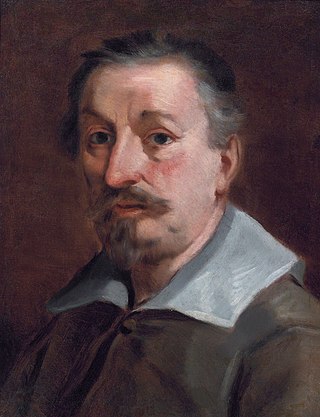
Francesco Albani or Albano was an Italian Baroque painter of Albanian origin who was active in Bologna, Rome, Viterbo (1609–1610), Mantua (1621–1622) and Florence (1633).

Giuseppe Maria Crespi, nicknamed Lo Spagnuolo, was an Italian late Baroque painter of the Bolognese School. His eclectic output includes religious paintings and portraits, but he is now most famous for his genre paintings.

Giovanni Lanfranco was an Italian painter of the Baroque period.

A festoon is a wreath or garland hanging from two points, and in architecture typically a carved ornament depicting conventional arrangement of flowers, foliage or fruit bound together and suspended by ribbons. The motif is sometimes known as a swag when depicting fabric or linen.

A baluster is an upright support, often a vertical moulded shaft, square, or lathe-turned form found in stairways, parapets, and other architectural features. In furniture construction it is known as a spindle. Common materials used in its construction are wood, stone, and less frequently metal and ceramic. A group of balusters supporting a handrail, coping, or ornamental detail is known as a balustrade.
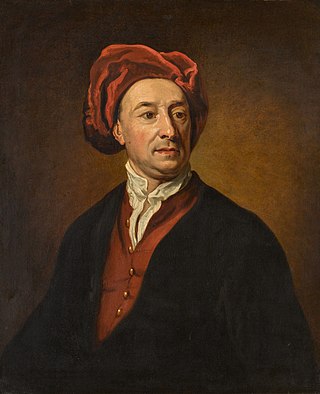
Jean-Baptiste Monnoyer was a Franco-Flemish painter who specialised in flower pieces. He was attached to the Gobelins tapestry workshops and the Beauvais tapestry workshops, too, where he produced cartoons of fruit and flowers for the tapestry-weavers, and at Beauvais was one of three painters who collaborated to produce cartoons for the suite The Emperor of China.

Fishing is a painting by Italian artist Annibale Carracci, painted before 1595 and given to Louis XIV by Prince Camillo Pamphili in 1665. It is currently held and exhibited at the Louvre in Paris.
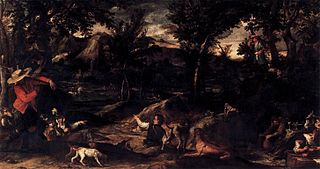
Hunting is a painting by Italian artist Annibale Carracci, painted before 1595 and given to Louis XIV by Prince Camillo Pamphili in 1665. It is currently held and exhibited at the Louvre in Paris.

The Carracci were a Bolognese family of artists that played an instrumental role in bringing forth the Baroque style in painting. Brothers Annibale (1560–1609) and Agostino (1557–1602) along with their cousin Ludovico (1555–1619) worked collaboratively. The Carracci family left their legacy in art theory by starting a school for artists in 1582. The school was called the Accademia degli Incamminati, and its main focus was to oppose and challenge Mannerist artistic practices and principles in order to create a renewed art of naturalism and expressive persuasion.

A medallion is a round or oval ornament that frames a sculptural or pictorial decoration in any context, but typically a façade, an interior, a monument, or a piece of furniture or equipment.
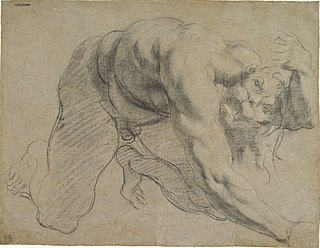
The Palazzo Sampieri frescoes are a set of paintings by Annibale, Agostino and Ludovico Carracci in the Palazzo Sampieri in Bologna. They form the last surviving collection of works by the three artists.
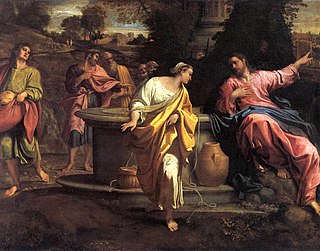
Christ and the Samaritan Woman or The Woman at the Well is a 1593-1594 oil on canvas painting by Annibale Carracci, painted as part of the same scheme as the Palazzo Sampieri frescoes. Several years later he also produced a much smaller autograph copy with variations, now in the Museum of Fine Arts, Budapest.
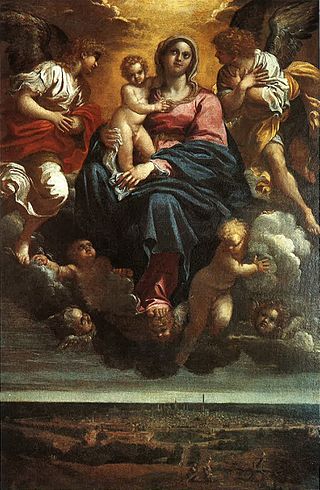
Madonna and Child in Glory over the City of Bologna is a c.1593 oil on canvas painting by Annibale Carracci, also known as The Virgin and Child in the Clouds or the Madonna of Bologna. It is now in Christ Church Picture Gallery in Oxford.
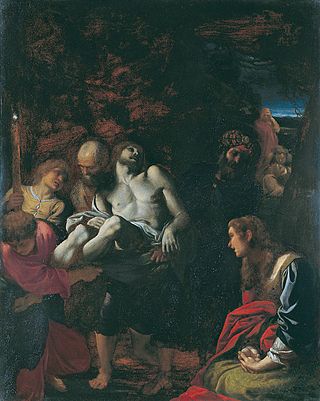
Entombment of Christ is a c.1595 oil on copper painting by Annibale Carracci, now in the Metropolitan Museum of Art




















